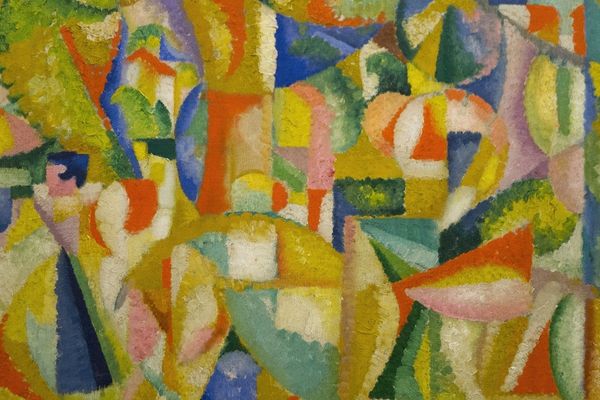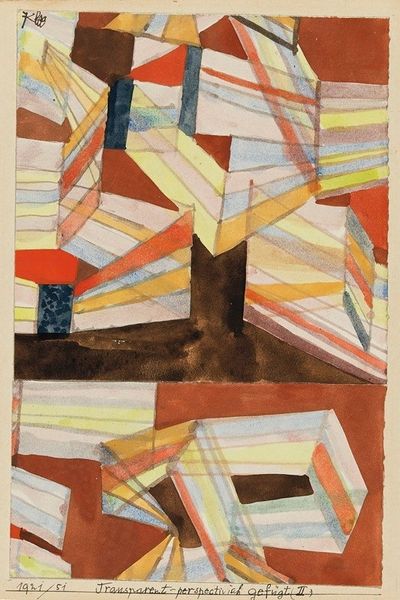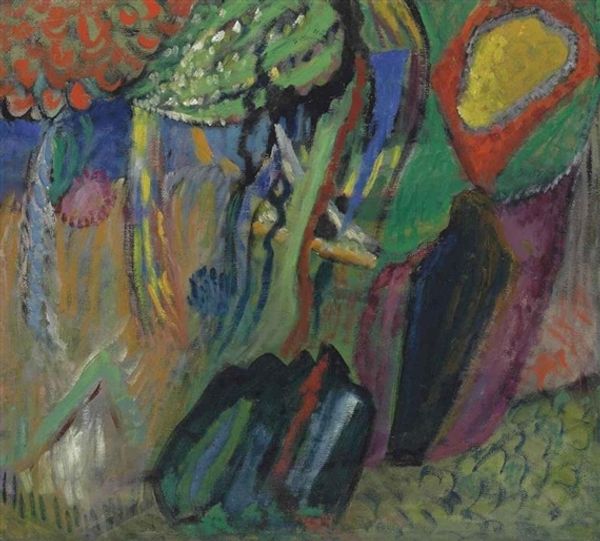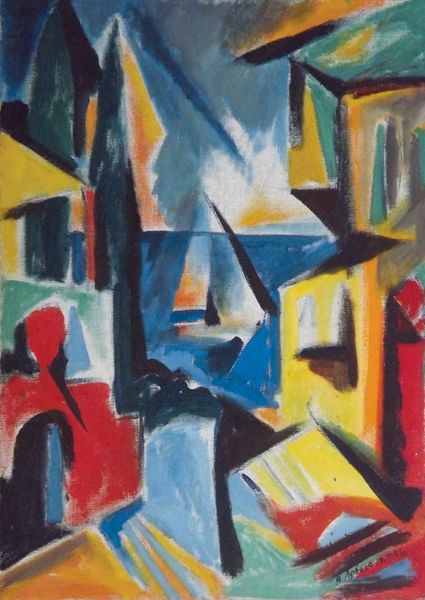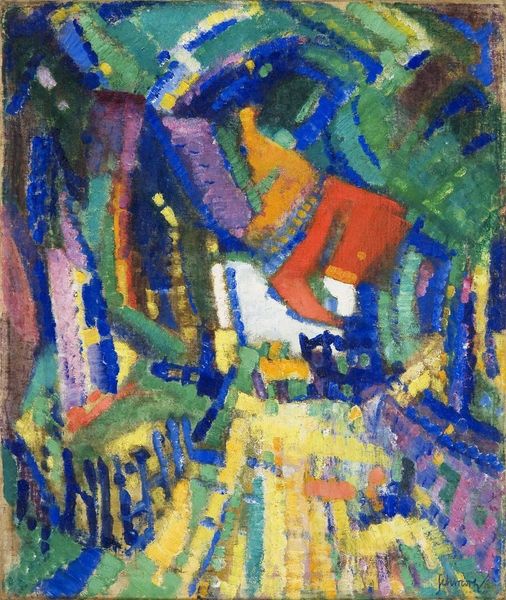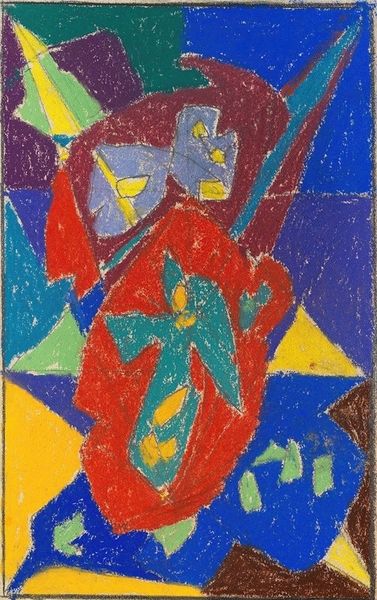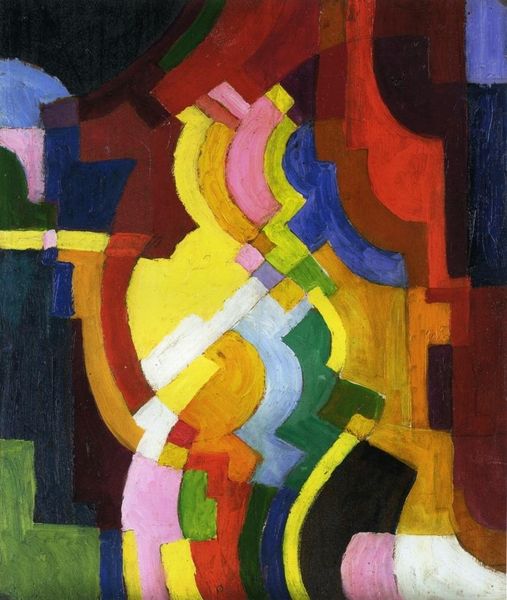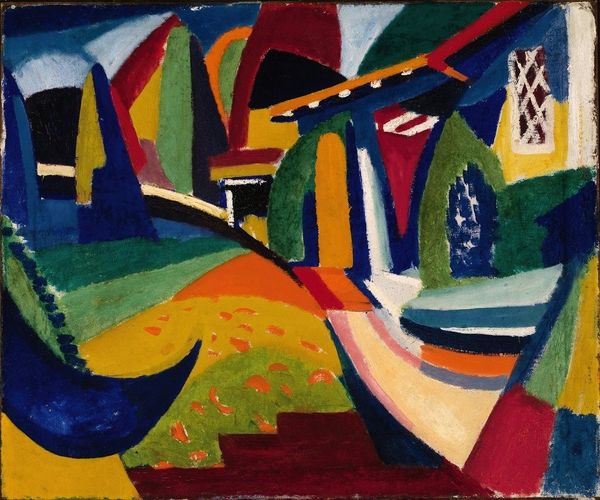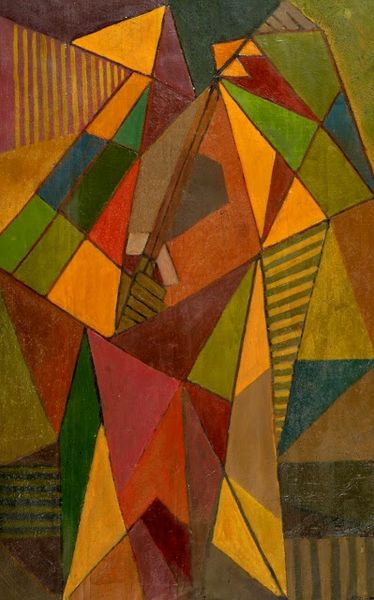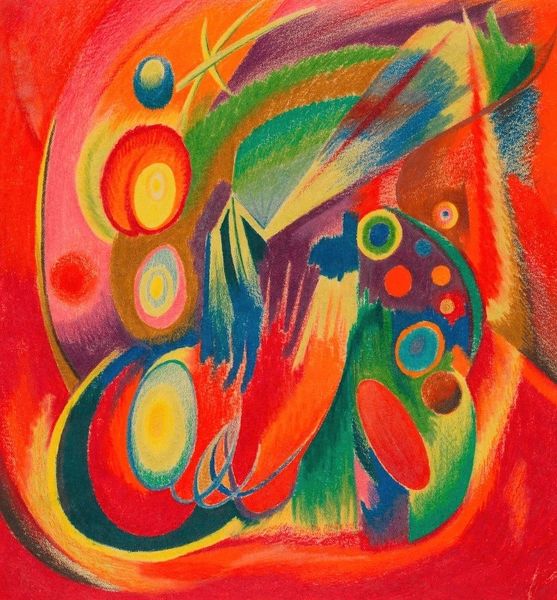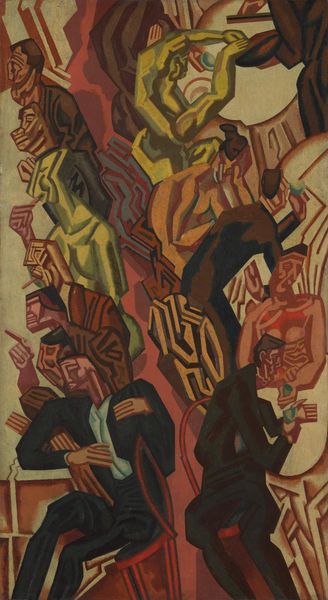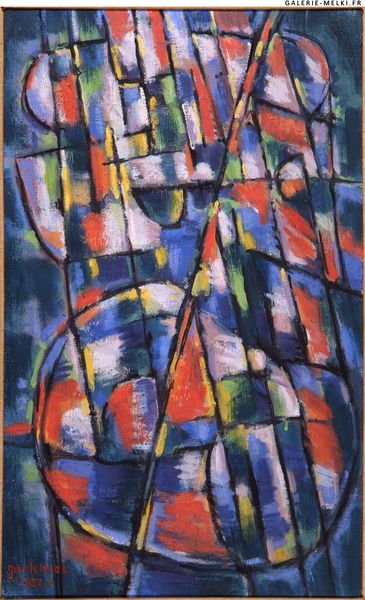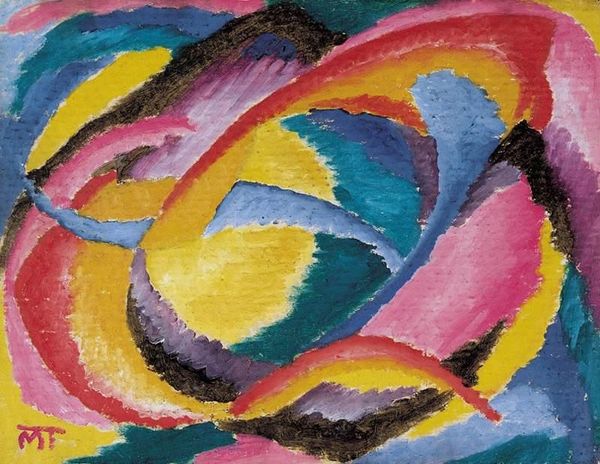
painting, oil-paint
#
cubism
#
painting
#
oil-paint
#
geometric
#
naive art
Dimensions: overall: 50.48 × 39.37 cm (19 7/8 × 15 1/2 in.) framed: 60.96 × 49.85 × 3.49 cm (24 × 19 5/8 × 1 3/8 in.)
Copyright: National Gallery of Art: CC0 1.0
Editor: This is Margaret Burroughs’ "Still Life" from 1943, rendered in oil paint. It's so vibrant! The geometric forms and patterns create a joyful, almost playful mood. What strikes you most about this piece? Curator: It's fascinating to view this work through the lens of the 1940s. Burroughs, an African American artist, was deeply involved in the Black Arts Movement. The energy you feel likely stems from an assertion of cultural identity through deliberate artistic choices. Does the use of “still life,” a traditionally Eurocentric genre, strike you as potentially subversive, particularly by a Black artist during this period? Editor: That’s interesting, I didn't think about the context that way. I was mainly focusing on the shapes and the way the colors interact, especially how she plays with textures. Is it fair to see it as a reclamation of the domestic space as a site for artistic expression? Curator: Precisely! Considering Burroughs’ commitment to community art, this “Still Life” might symbolize accessible beauty found in everyday Black life. It pushes back against art world elitism and asks, “Who gets to define beauty, and where do we find it?” What impact do you think displaying this artwork could have? Editor: I guess seeing it this way makes me think it could really empower visitors to reconsider art's role as a tool for social commentary, to think about their role, and their cultural roots, especially. Curator: Absolutely, and in recognizing that potential for social dialogue, this artwork transcends mere representation to become a powerful agent of cultural and historical inquiry.
Comments
No comments
Be the first to comment and join the conversation on the ultimate creative platform.
